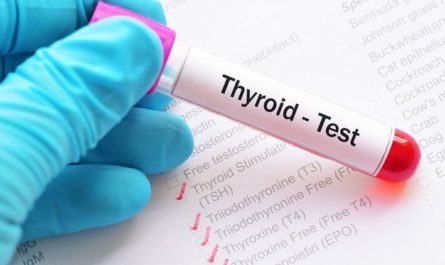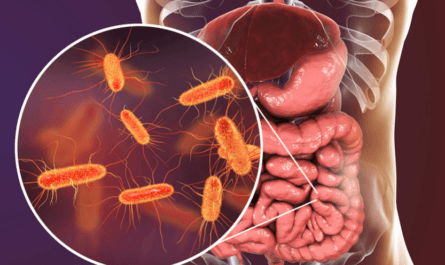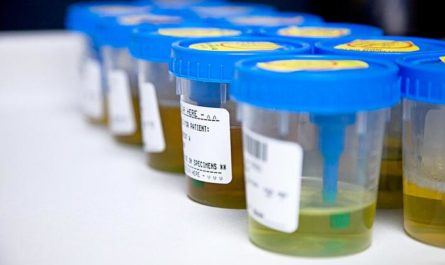Urobilinogen (UBG or URO) is a colorless substance naturally present in urine in small quantities. Ordinarily, bilirubin is converted into urobilinogen by the bacteria in the duodenum. Afterward, the intestine reabsorbs the URO, and the liver changes it back into bilirubin. This entire process is called the intrahepatic urobilinogen cycle.
Normally, urobilinogen is mostly found in feces. Nevertheless, the kidneys can also aid in eliminating this substance. Thus, healthy urine may contain less than 17 micromols/L of URO.
However, certain health conditions can cause a person to excrete dark-yellow urine, which may indicate a high presence of urobilinogen. Conversely, in some medical conditions, urobilinogen may be absent or insufficient. This article will discuss 10 common causes of Urobilinogen in urine with treatment.
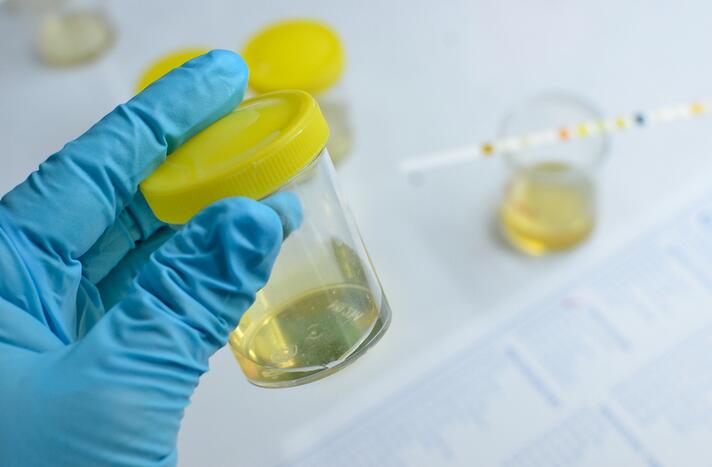
What is a Urobilinogen in Urine Test?
A urobilinogen in urine test is a medical test that measures the amount of urobilinogen in your urine. Urobilinogen is a substance created when bilirubin is broken down by the good bacteria in your intestines.
Bilirubin is made when your body breaks down old red blood cells, and it’s used by your liver to make bile, a fluid that helps with digestion.
The amount of urobilinogen in your urine can tell your doctor a lot about your liver and your overall health. If your test results show that you have too much urobilinogen in your urine, it could be a sign of liver diseases such as cirrhosis or hepatitis.
On the other hand, if your test results show little or no urobilinogen in your urine, it could indicate other problems with your liver, gallbladder, or bile ducts.
What is the use of the urine test for urobilinogen?
The urine test for urobilinogen is a vital part of a standard urinalysis, frequently used to assess an individual’s overall health status. It aids in identifying diseases that affect the liver, gallbladder, bile ducts, and hemolytic anemia.
Symptoms of liver disease include nausea, vomiting, lack of appetite, fatigue, weakness, jaundice, swelling and/or pain in the abdomen, swelling in the ankles and legs, dark-colored urine, light-colored stools, and frequent itching. A urine test for urobilinogen can assist in diagnosing such conditions.
Additionally, hemolytic anemia may manifest with symptoms such as fatigue, dizziness, heart palpitations, headache, confusion, jaundice, hepatomegaly, and splenomegaly. Urobilinogen testing can also help in the diagnosis of this condition.
What Do the Results Mean?
The normal range for urobilinogen in urine typically falls below 17 umol/L (<1mg/dl). However, values from 0 to 8 mg/dl are still considered acceptable. Any urobilinogen levels that fall outside this range are generally considered abnormal in a clinical setting.
If the results of your urine test indicate a higher-than-normal level of urobilinogen, it could mean various medical conditions. These include hepatitis, cirrhosis, liver damage due to drugs, and hemolytic anemia.
This condition occurs when red blood cells are destroyed before they can be replaced, leaving the body with insufficient healthy red blood cells. However, abnormal results do not always signify a medical condition that requires treatment.
On the other hand, low levels of urobilinogen in urine may suggest a blockage within the bile duct system or a failure in bile production.
What Causes Urobilinogen in Urine? 10 Common Causes
Urobilinogen is a byproduct of the breakdown of red blood cells (RBCs), and it is typically present in urine at low levels. However, when its levels increase, it can indicate an underlying condition that requires medical attention.
1. Liver Diseases and Urobilinogen
Liver diseases are one of the leading causes of urobilinogen in urine. When the liver cannot function correctly, it can lead to a build-up of urobilinogen in the body. The following are some of the liver diseases that can cause this condition:
- Hepatitis: Hepatitis is an inflammation of the liver caused by a viral infection. When the liver is inflamed, it may not be able to process urobilinogen properly, leading to an increase in its levels in the body.
- Liver Cirrhosis: Liver cirrhosis is a condition in which the healthy tissues of the liver are replaced by scar tissue. This can occur due to long-term alcohol abuse or a diet low in protein. When the liver is scarred, it may not be able to process urobilinogen properly, leading to increased levels in the body.
- Necrosis: Necrosis is the death of tissue in a particular organ. When the liver tissue dies, it can build up urobilinogen in the body.
- Liver Cancer: Liver cancer is a condition in which there is an abnormal growth of cells in the liver. When there are too many cells in the liver, it may not be able to process urobilinogen properly, leading to an increase in its levels in the body.
2. Hemolysis: A Major Cause of Urobilinogen in Urine
Hemolysis is a condition where RBCs are broken down too soon, leading to the release of their contents, including bilirubin and urobilinogen. The liver then processes these substances, which are eventually excreted in urine and stool.
Several different medical, bacterial, and parasite infections can cause hemolysis. In cases of abnormal hemolysis, there is a delicate balance between RBC breakdown and production, leading to increased urobilinogen levels.
3. Pernicious Anemia and Bilirubin Production
Pernicious anemia is when the body does not produce enough RBCs due to vitamin B12 and folic acid deficiency. Insufficient amounts of B12 can also cause RBC destruction in the bone marrow, leading to increased bilirubin production and, subsequently, urobilinogen levels in urine.
4. Cholestasis and Obstruction of Bile Ducts
Cholestasis is a medical condition that occurs when there is a blockage in the ducts that transport bile, interrupting proper bile flow.
This blockage may be caused by the formation of scar tissue, which narrows the passageways. Gallstones are also a common culprit in causing blockages in the bile ducts.
5. Crigler-Najjar Syndrome
Crigler-Najjar Syndrome is a rare genetic disorder that affects the metabolism of bilirubin in the body, leading to high levels of unconjugated bilirubin in the bloodstream. If left untreated in newborns, this condition can cause irreversible damage to the brain.
6. Certain Medications
Some medications can also cause cholestasis. For example, taking antibiotics can eliminate beneficial bacteria in the gut, which helps transform bilirubin into urobilinogen.
Additionally, taking high amounts of Vitamin C and ammonium chloride can increase the acidity of urine, lowering the concentration of urobilinogen.
7. Dubin-Johnson Syndrome and Dark-Pigmented Liver
Dubin-Johnson Syndrome is a rare hereditary genetic disorder that leads to an isolated increase in bilirubin levels. Individuals with this condition will have a darkly pigmented liver due to the deposition of a pigment similar to melanin.
8. Rotor’s Syndrome and Increase in Conjugated Bilirubin
Rotor’s Syndrome is a rare and benign condition quite similar to Dubin-Johnson Syndrome, as both cause an increase in conjugated bilirubin. The only difference is that Rotor’s Syndrome does not lead to a darkly pigmented liver.
9. Congestive Heart Failure and Fluid Retention
Congestive heart failure is characterized by the heart’s inability to pump adequate blood, leading to poor perfusion of organs and tissues.
In response, the kidneys will attempt to compensate by causing the body to retain fluid, leading to swelling in various organs. The retention of fluid can also increase urobilinogen levels in urine.
10. Lead Poisoning
Lead poisoning occurs when lead builds up in the body over time, causing severe liver damage and health problems. This can happen when ingesting lead-based paint or lead-contaminated dust in older buildings or when exposed to contaminated air, water, and soil.
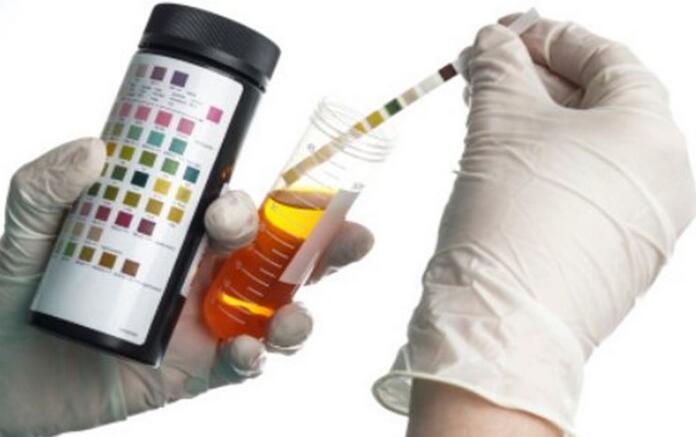
Treatment for urobilinogen in urine
If you have elevated levels of urobilinogen in your urine, it may indicate an underlying medical condition that requires treatment. Treatment options will depend on the specific cause of your elevated urobilinogen levels. Here are some standard treatment approaches for managing urobilinogen in urine:
- Treating underlying liver diseases: If your elevated urobilinogen levels are due to liver disease, the primary focus of treatment will be to manage the underlying condition. Treatment may include medication, lifestyle changes, and, in severe cases, a liver transplant.
- Addressing other medical conditions: If urobilinogen levels are elevated due to other medical conditions, such as congestive heart failure or lead poisoning, treatment will focus on managing those conditions.
- Medications: Your doctor may prescribe medications to help manage your symptoms, reduce inflammation, or improve liver function.
- Lifestyle changes: Adopting a healthy lifestyle can help improve liver function and reduce your risk of liver disease. This includes reducing alcohol consumption, maintaining a healthy weight, and avoiding exposure to toxic substances.
- Follow-up appointments: Regular follow-up appointments with your doctor will be necessary to monitor your condition and adjust treatment as needed.
When to see a doctor?
If you are experiencing unusual symptoms or changes in your urine, it is essential to consult a healthcare professional immediately. It is recommended to seek medical attention if you notice any of the following:
- Dark Urine: If your urine appears darker than usual, it may indicate a higher concentration of urobilinogen.
- Pale or Clay-Colored Stool: A unusually light or clay-colored stool may also indicate a problem with the liver or bile duct.
- Abdominal Pain: Pain or discomfort in the abdominal region may indicate a liver or gallbladder issue.
- Yellowing of the Skin or Eyes: This condition, also known as jaundice, may occur when the liver is not functioning correctly and can cause the skin and eyes to appear yellowish.
- Nausea or Vomiting: These symptoms may be associated with liver disease or other underlying conditions.


